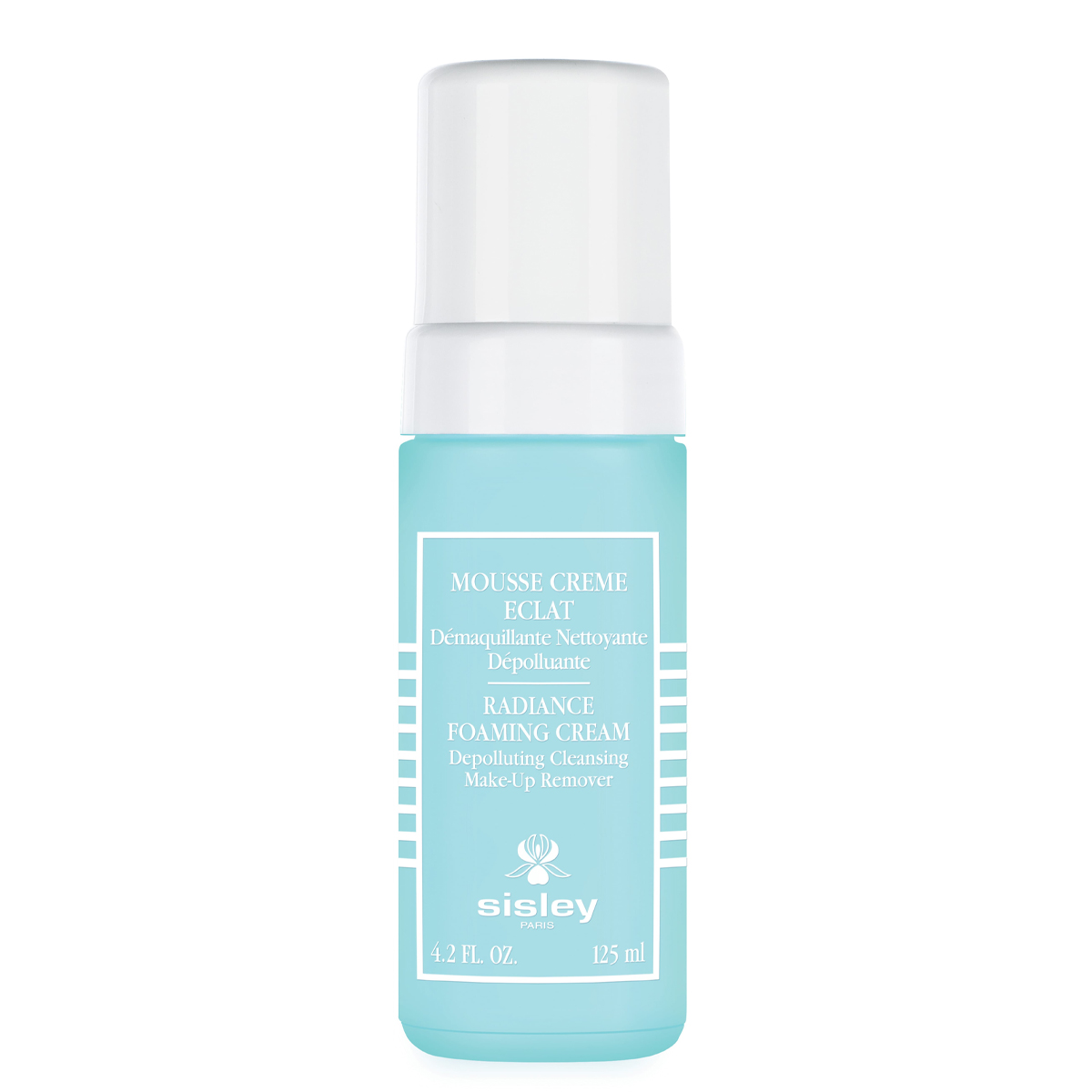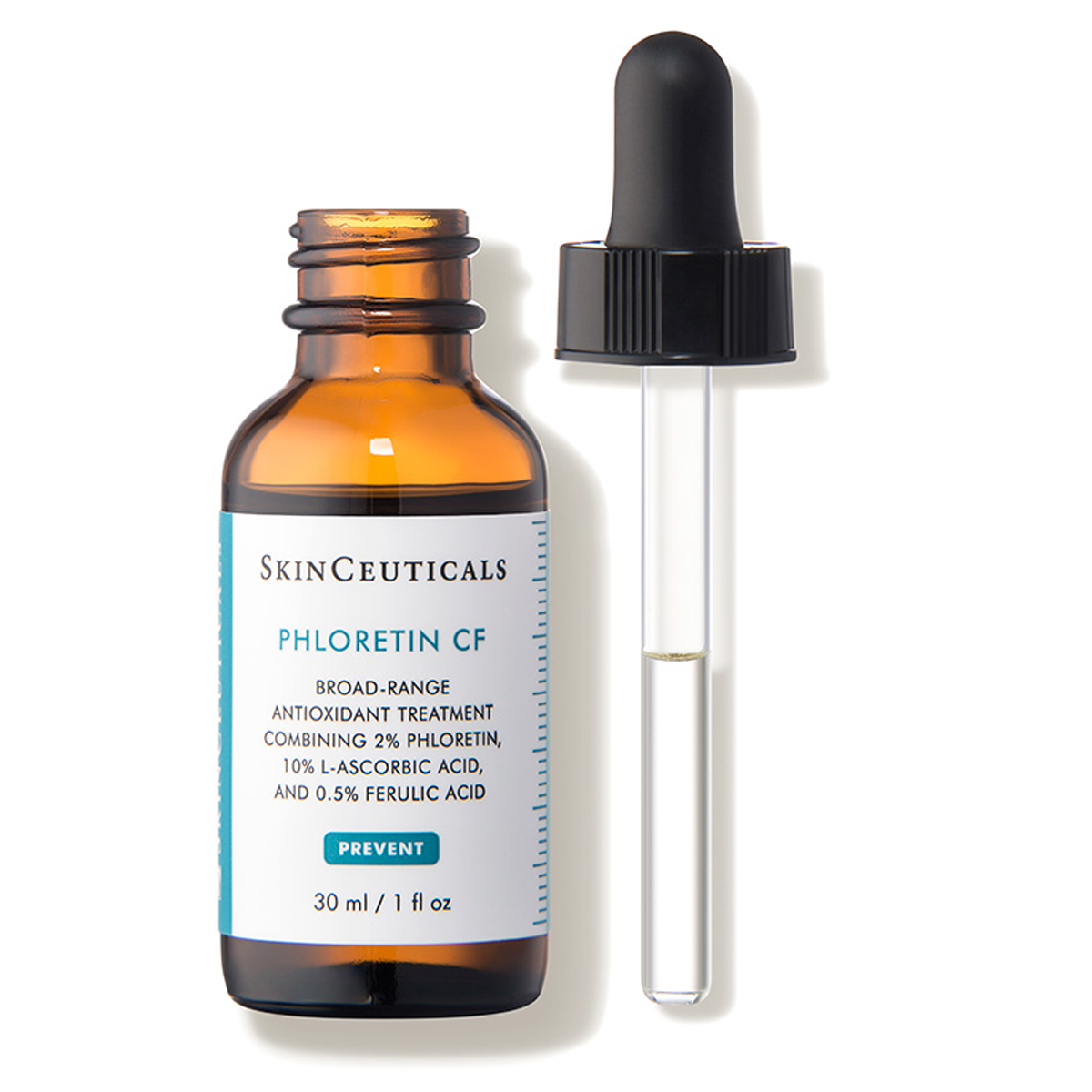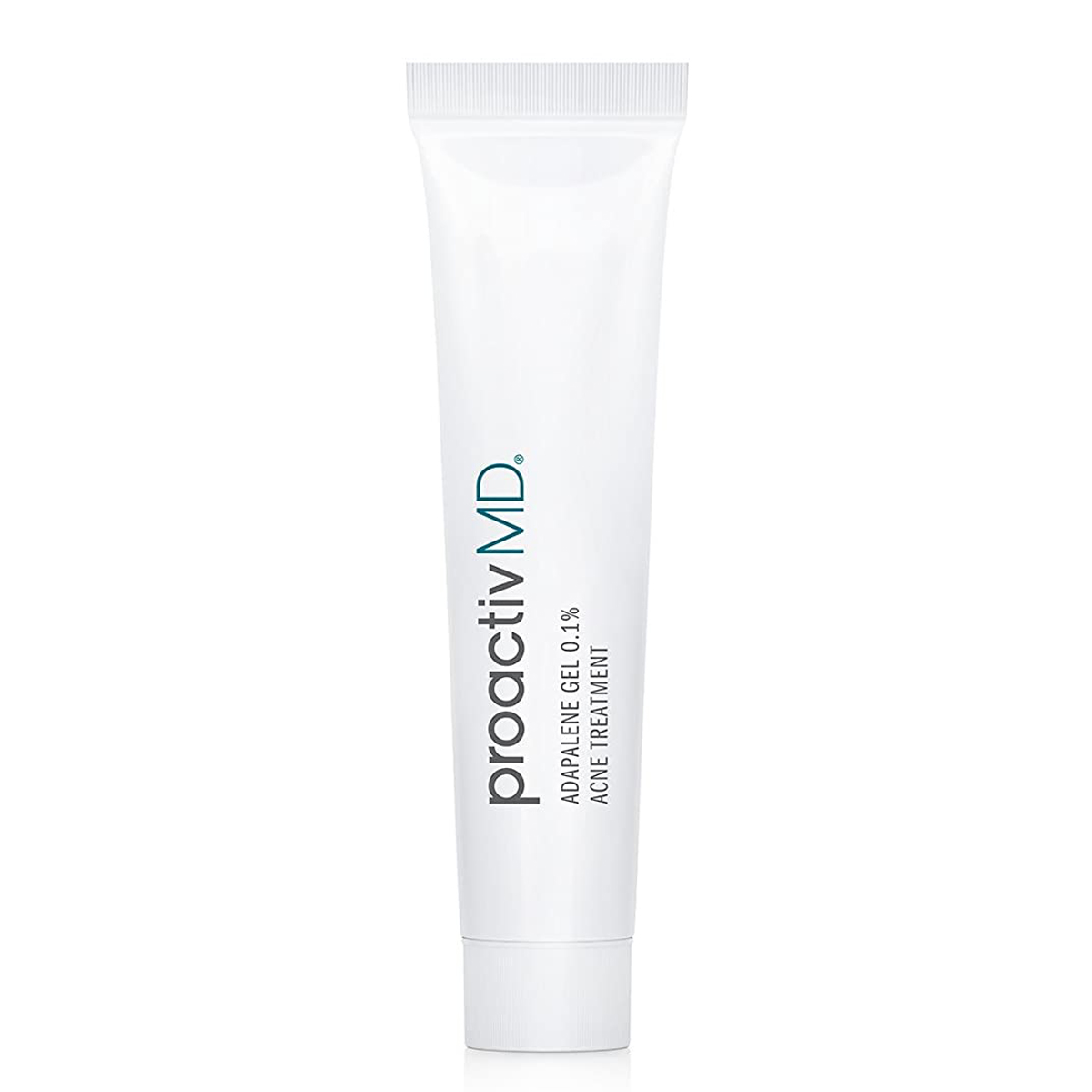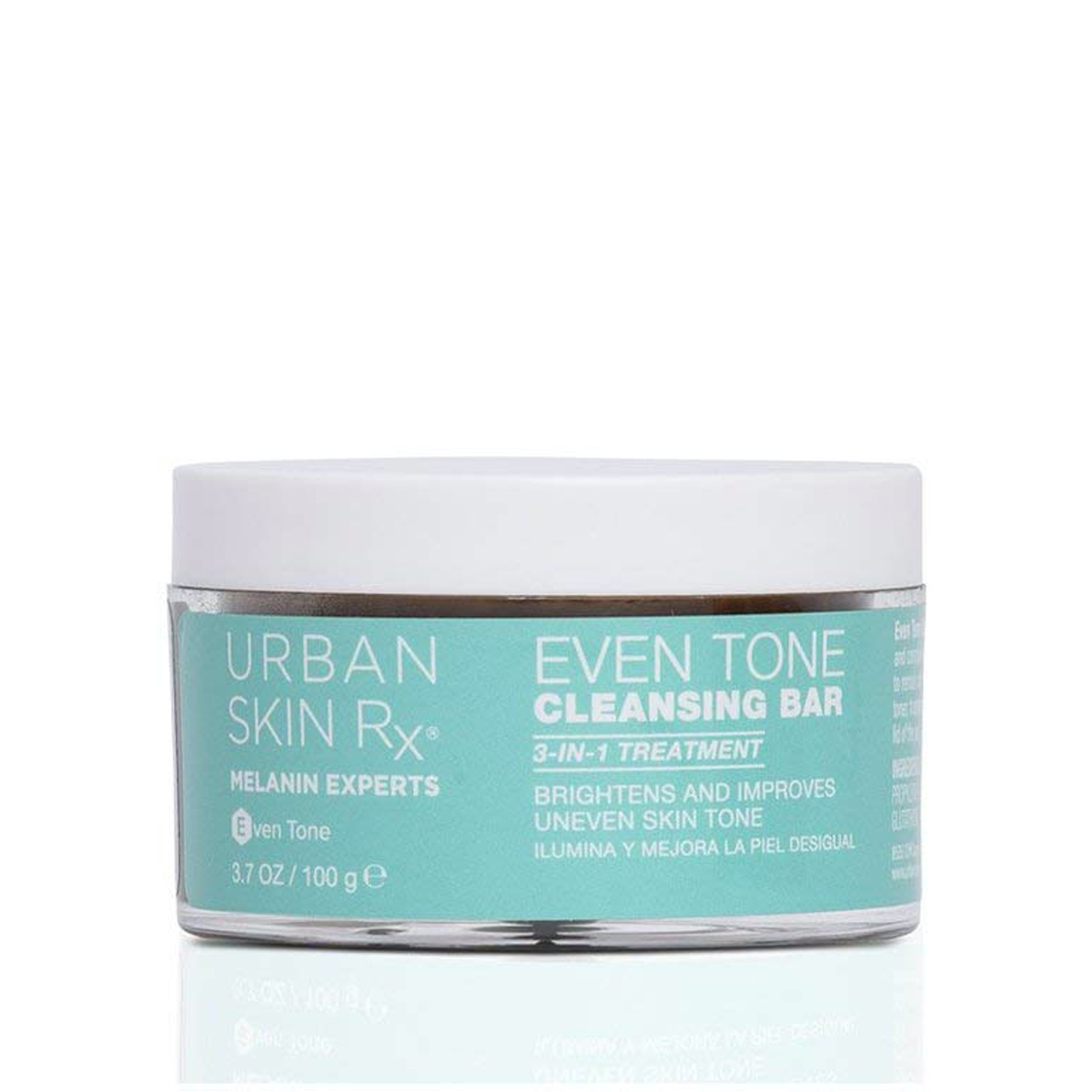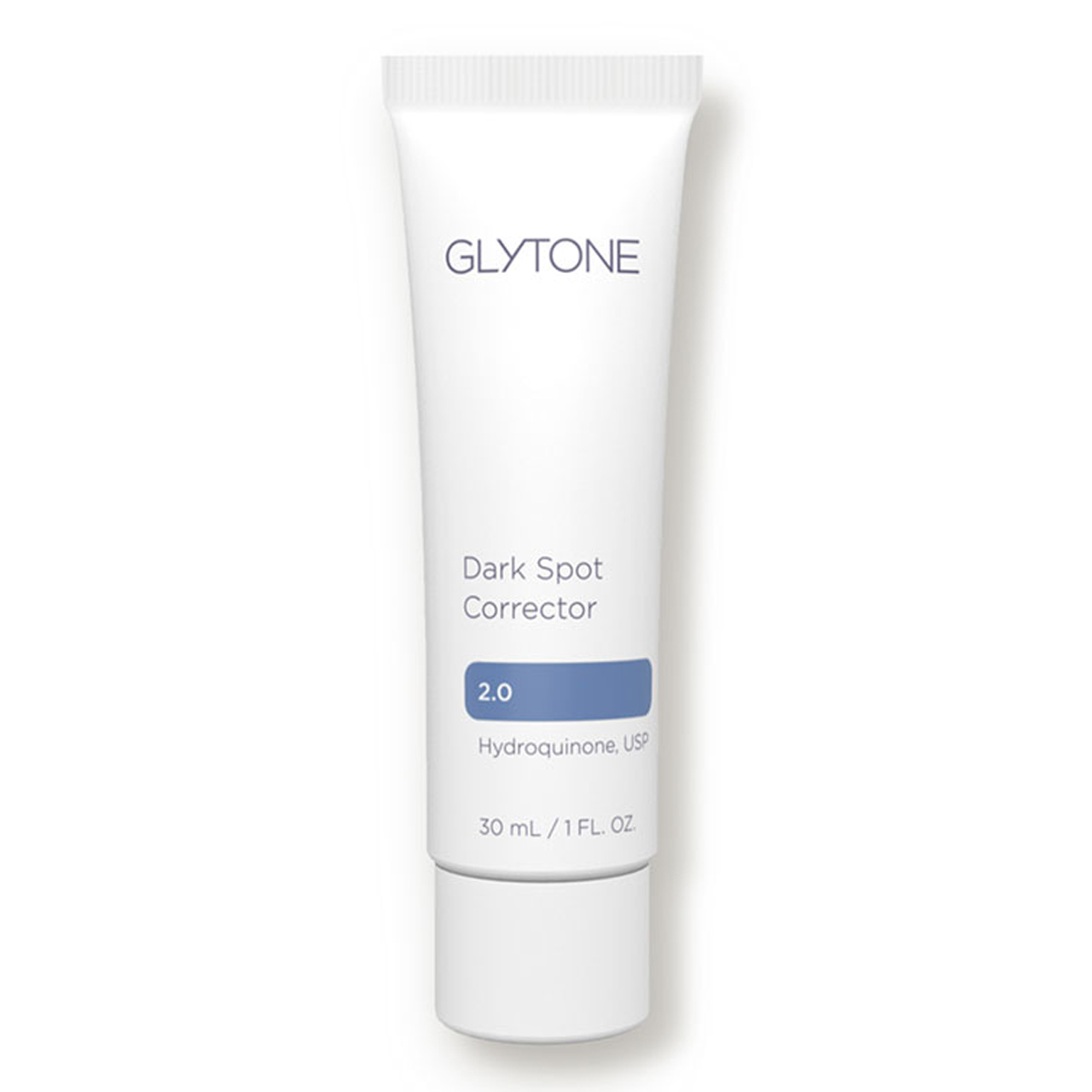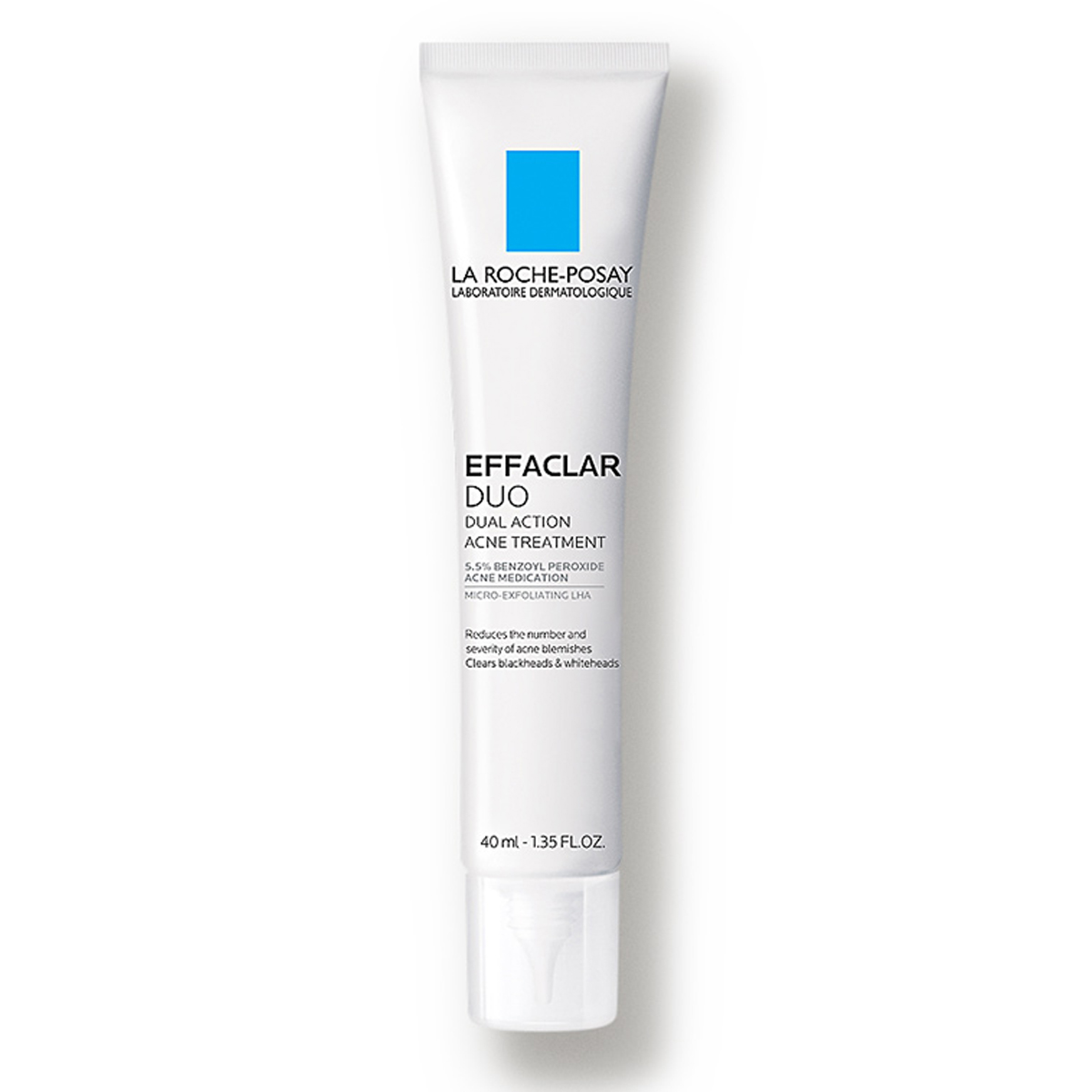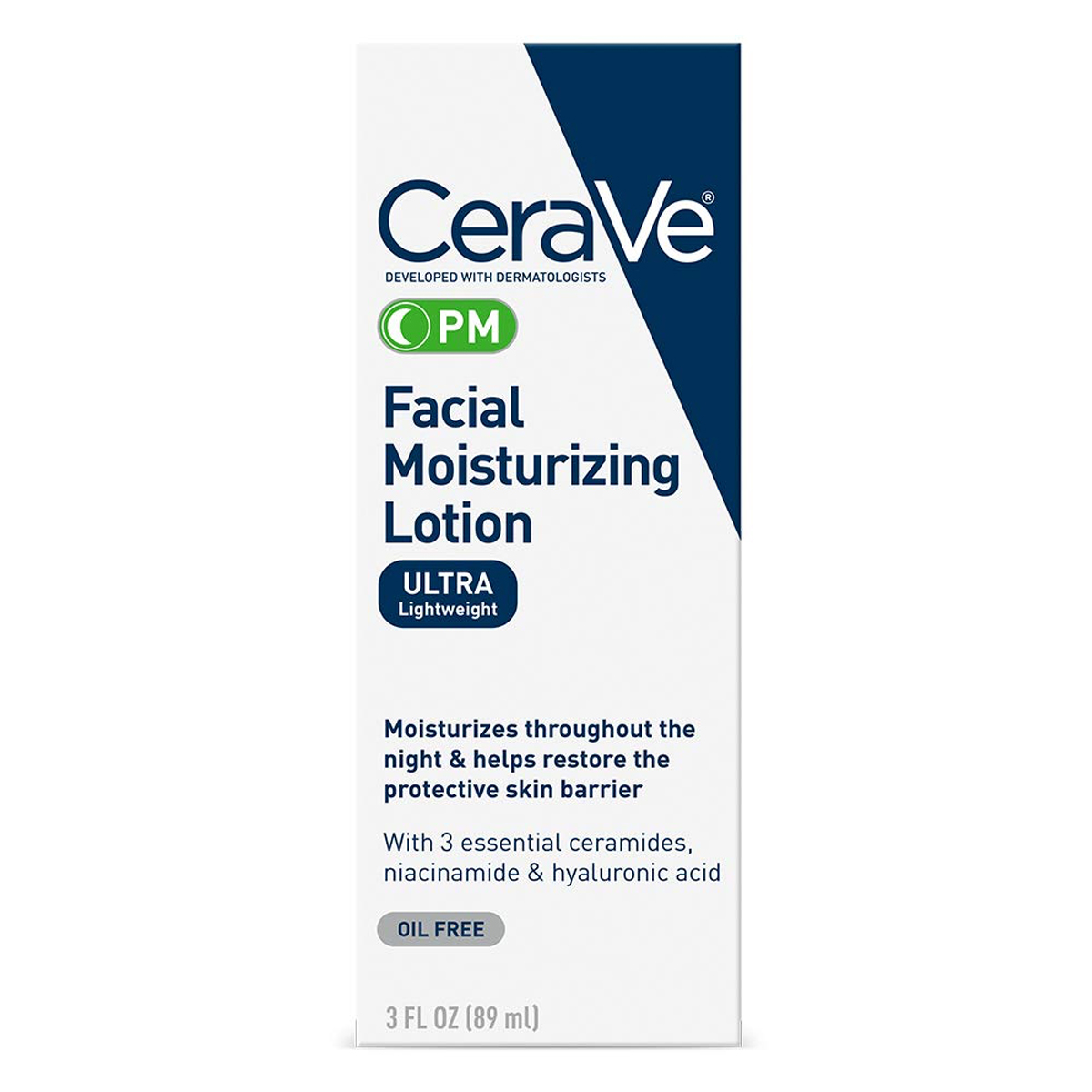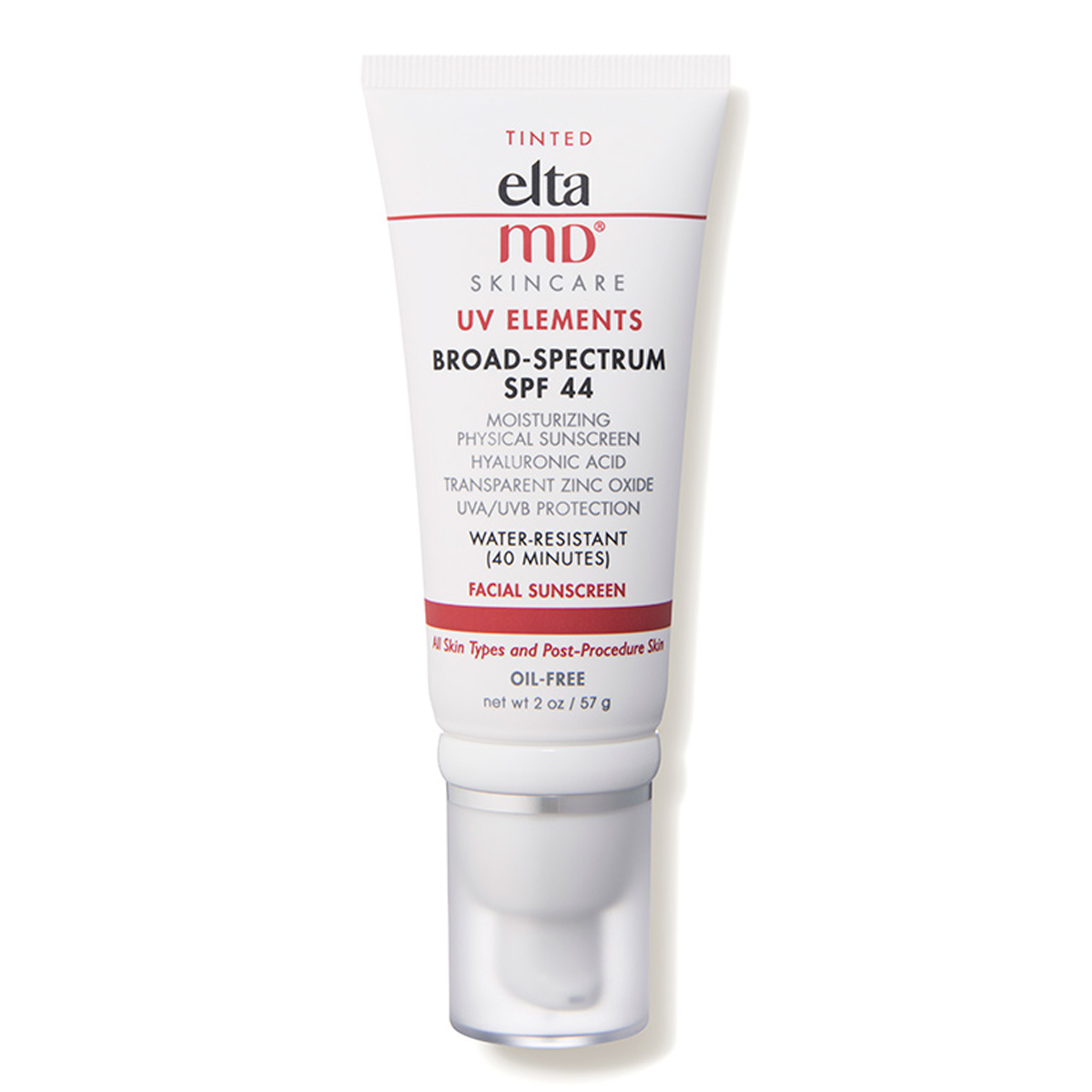Confession: I'm a Skin Picker But Swear By These Acne-Scar Treatments

Like any other night, I go to the bathroom and begin my skincare routine. Next thing I know, I’m leaning over the sink with my face up against the mirror, picking and prodding my face, not realizing that 30 minutes have passed. As soon as I break my trance-like state and see my red, splotchy skin, the shame sets in. Because the thing is, my skin is generally good. I mean, I get a few blemishes around my period, when I eat poorly, or if I’m stressed (and 2020 has been stressful, people!), but I’m the one who makes matters worse by squeezing the tiny bumps that no one can see, turning them into big red marks that can last for weeks to months and are always worse than the damn blemish itself. "Picking at acne scabs will make them worse and delay healing," says Michele Farber, MD, of Schweiger Dermatology Group in NYC. "It results in a cyclical process that causes progression of marks or scars."
Now, I know there’s no magic wand that can fix a scar or spot overnight, but there are a few things you can do immediately after a skin-picking episode: "I recommend that patients very gently clean their skin to remove any surface bacteria and decrease the chance of infection and then apply a very small amount of hydrocortisone cream followed by a layer of a petroleum ointment such as Aquaphor or Vaseline,” explains Rachel Nazarian, MD, FAAD, at Mount Sinai's Department of Dermatology. "This combination decreases the chance of infection, decreases inflammation, and accelerates wound healing.” Another tip, "Try using ice or cold compresses for a few minutes on the inflamed spot to calm down the swelling and inflammation,” says Yunyoung Claire Chang, MD, at Union Square Laser Dermatology.
For long-term damage control, there are specific ingredients to look for in products that can help treat, prevent, lighten, and brighten marks over the course of time. And since I’ve dealt with some form of skin picking since I was a teenager, I’ve got a handful of personal and expert-recommended products in my arsenal.
Cleansers for Treating Marks and Preventing Breakouts

Finding a good cleanser is something I admittedly overlooked for years, but this one has honestly changed my skin. It uses a combination of bio-nutrients, antioxidants, and mild resurfacing ingredients (salicylic acid!) that just make your skin feel really, really clean and never tight or dry. The silky gel texture lathers up nicely and removes all the makeup and grime build-up from the day.

If you want to prevent future scars, you need to have a good defense in place, and this is my favorite drugstore pick. It contains salicylic acid, which exfoliates the skin and can help soften bumps, but it also does a great job of unclogging pores. The fewer unclogged pores you have, the fewer blemishes you’ll get, and those are the precursors to scars.
Serums for Brightening Skin and Lightening Dark Marks
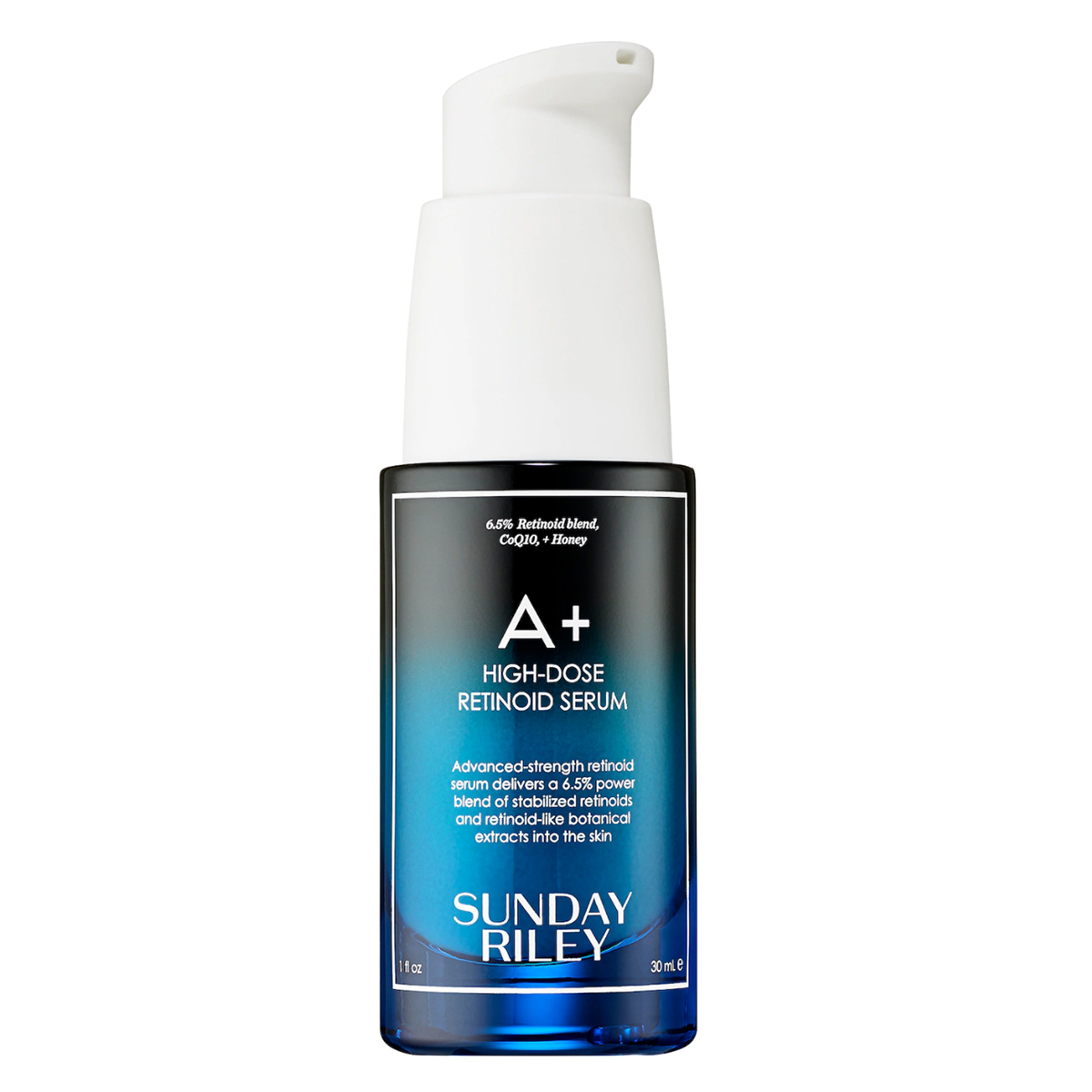
When it comes to skincare ingredients, retinoids are the gold standard for treating dark spots, fine lines, and preventing future breakouts. Retinols contain a lower concentration of the active retinoic-acid ingredient, which means they’re readily available over the counter while retinoids have a much higher concentration and usually require a prescription. Both do exactly the same thing, but you’ll see results quicker with a retinoid than retinol. But that’s okay because retinol is generally easier on the skin, and such is the case with this gem of a serum. It delivers a 6.5% solution of stabilized-retinoid blends and botanical retinol-alternative extracts to the skin. Basically, you get the same results without the drawbacks of a typical retinol. It’s also made with CoQ10, which can help improve the appearance of aging or UV-exposed skin.

This stuff is pricey, but damn, it’s so worth it. It’s a patented formula (hence the price tag) with a blend of 15% pure vitamin C, which brightens skin; 1% vitamin E, which replenishes skin lipids; and 0.5% ferulic acid, which is a plant-based antioxidant that basically enhances the benefits of vitamins C and E. "It's a consistent favorite because it has a high concentration of vitamin C in a stable form," shares Farber. I apply four drops to my skin after cleansing in the morning by pressing it into my skin versus rubbing, then let it do its thing for a few minutes before following up with any other product. I’m telling you, your entire face will be brighter and more glowy.

When this first came out, it sold out within a few hours and there was a massive waiting list. I’m so happy I got my hands on a bottle because it’s done nothing but good things for my skin. It’s made with 20.5% pure vitamin C and 72% black chokeberry, which is a special ingredient that stabilizes the vitamin C. It really does help lighten brown spots and acne scars. Nothing but good things to say about it!
Masks and Treatments for Stubborn Dark Marks
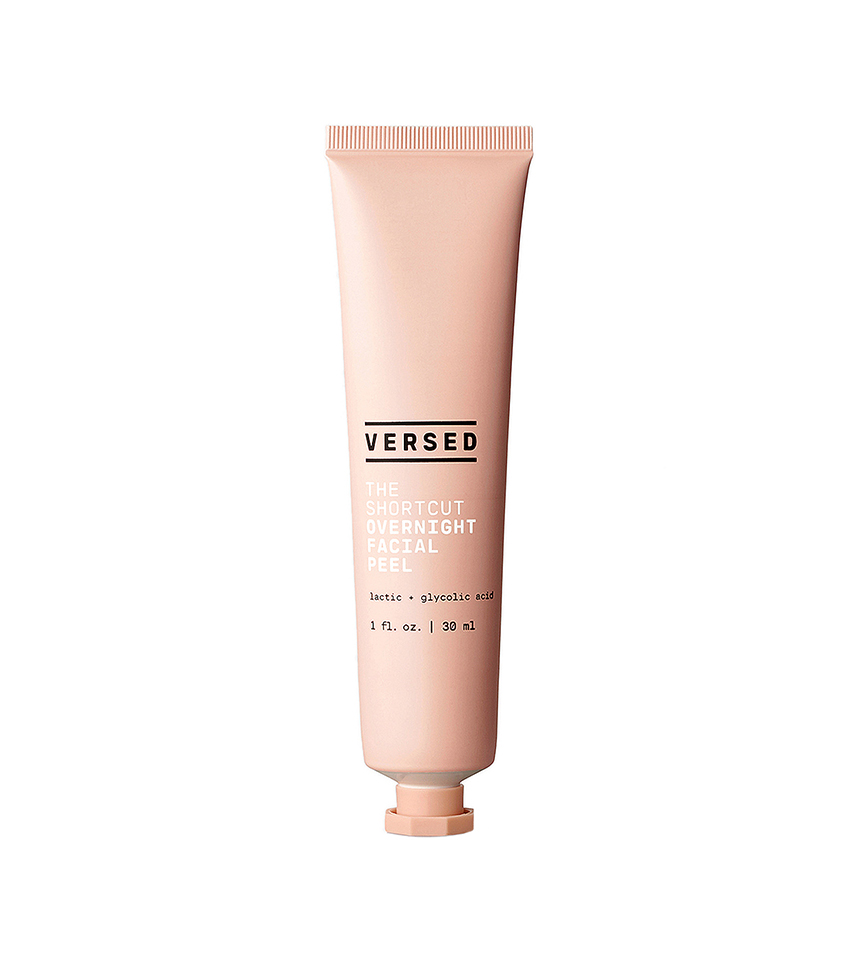
This is one of my favorite overnight masks. This lactic- and glycolic-acid peel renews your complexion by breaking down dead skin cells while exfoliating, brightening, and hydrating the skin. Slather this stuff on before bed and wake up with a seriously brighter complexion.

This is the first prescription-strength retinoid that became available OTC. It affects cell turnover faster than retinol but is gentler than other prescription-grade retinoids. If I have a particularly bad blemish, I like to use this, but it’s also great for lightening existing marks. Spot-test it first, though, because it can irritate the skin.

If you’d rather not use Differin, try this—I'm a big fan. Hydroquinone is an effective lightening agent that’s great for reducing the appearance of acne marks. "Hydroquinone decreases the formation of melanin pigment in the skin and can be used for various pigment conditions including dark marks,” says Chang. This specific cream includes 2% of hydroquinone, which is the highest concentration allowed in an OTC product. It also contains soy and vitamin E, which can treat pigmentation. I usually use this on specific spots rather than all over my face.

I was introduced to this years ago, and when I started to use it regularly, I got so many compliments on my skin. Man, do I love it. The price is a downer, but it’s worth it, IMHO. It’s made with a bunch of grade-A ingredients, like purified lactic acid, which hydrates and exfoliates the surface of the skin; licorice and lemongrass, which brighten the appearance of dark spots and discolorations; and prickly pear extract, which soothes the appearance of redness and supports a more even-toned complexion. Be patient and consistent, and you’ll notice a huge improvement in your skin.
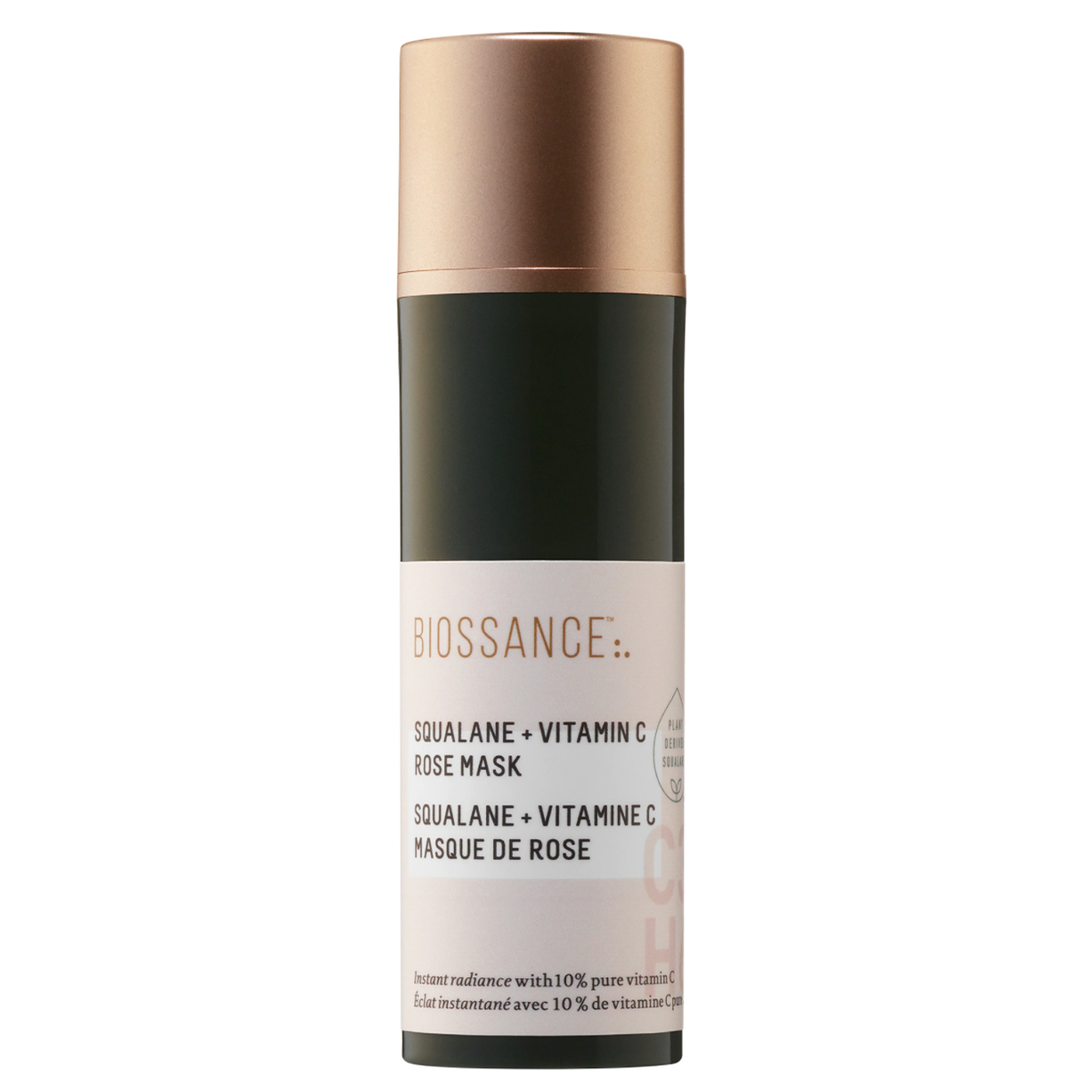
This mask is dreamy. It suggests using it daily, but I only use it a few times a week. The key ingredient in this is L-ascorbic acid 10%, which is basically pure vitamin C that instantly brightens skin and protects it against environmental aggressors. Once applied, the gel turns into a cream, activated by your skin's moisture, and after 15 minutes, you can wash it off.
Spot Treatments for Lightening Dark Marks

To be clear, I wouldn’t use these over the other treatments and serums I’ve mentioned. I like to have these when I travel because they’re easy. Similar to pimple patches, these oil-free dots help lighten the appearance of dark spots and even and brighten skin tone with a blend of niacinamide, licorice extract, and tranexamic acid. I usually will pop one on after cleansing before going to bed.
Moisturizers for Lightening Dark Marks

In terms of moisturizers, you want to make sure that there is some sort of natural skin brightener in the ingredients, like kojic acid. This one also has licorice extract, bearberry, and sophora root, which basically makes this the best sort of skin cocktail for fading acne marks.
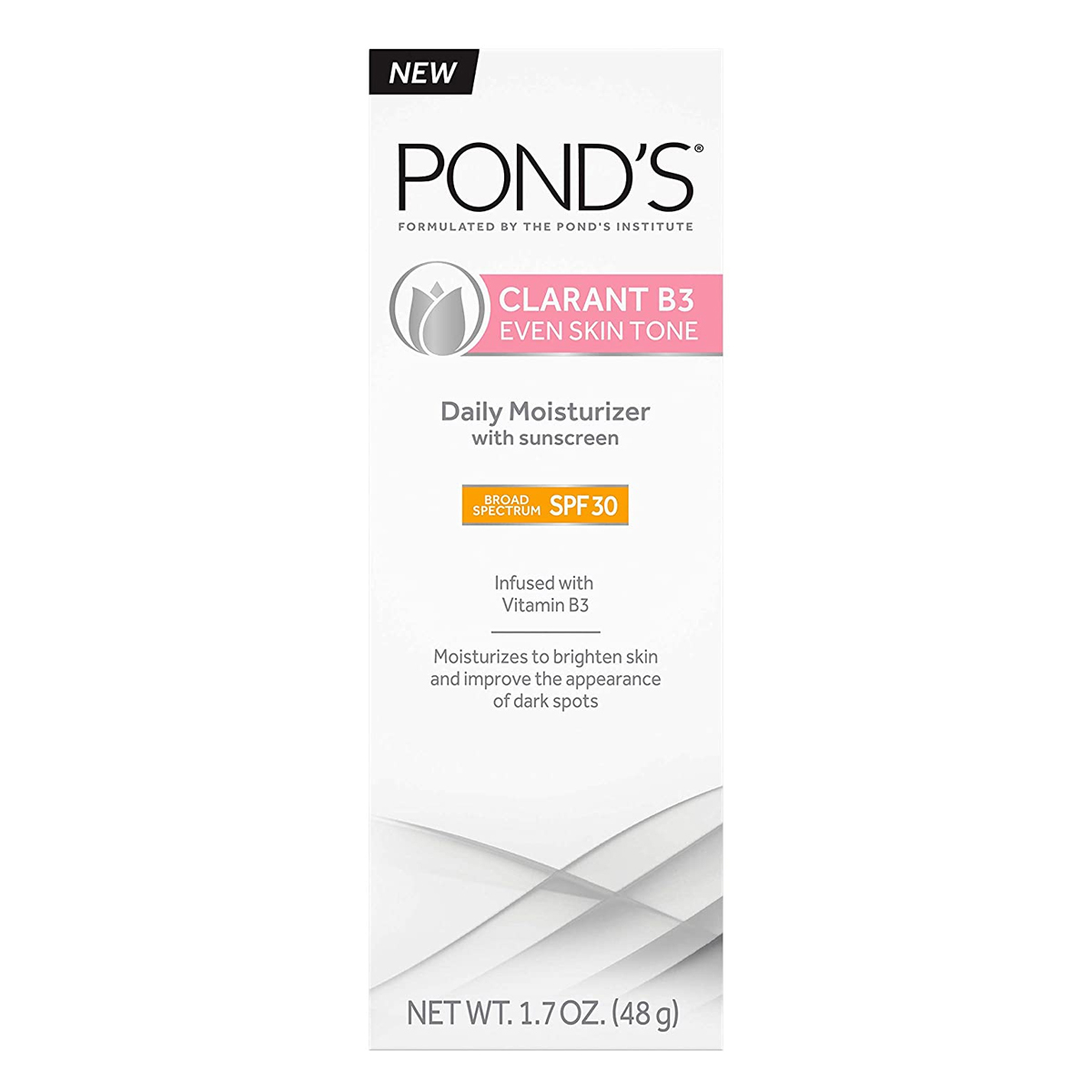
My favorite drugstore moisturizer. Not only does it have SPF 30, but it’s also made with vitamin B3, which is a known ingredient for helping reduce the appearance of skin discoloration. Nothing fussy—just a good, standard moisturizer that’s really affordable.
SPFs for Protecting and Preventing the Worsening of Dark Marks
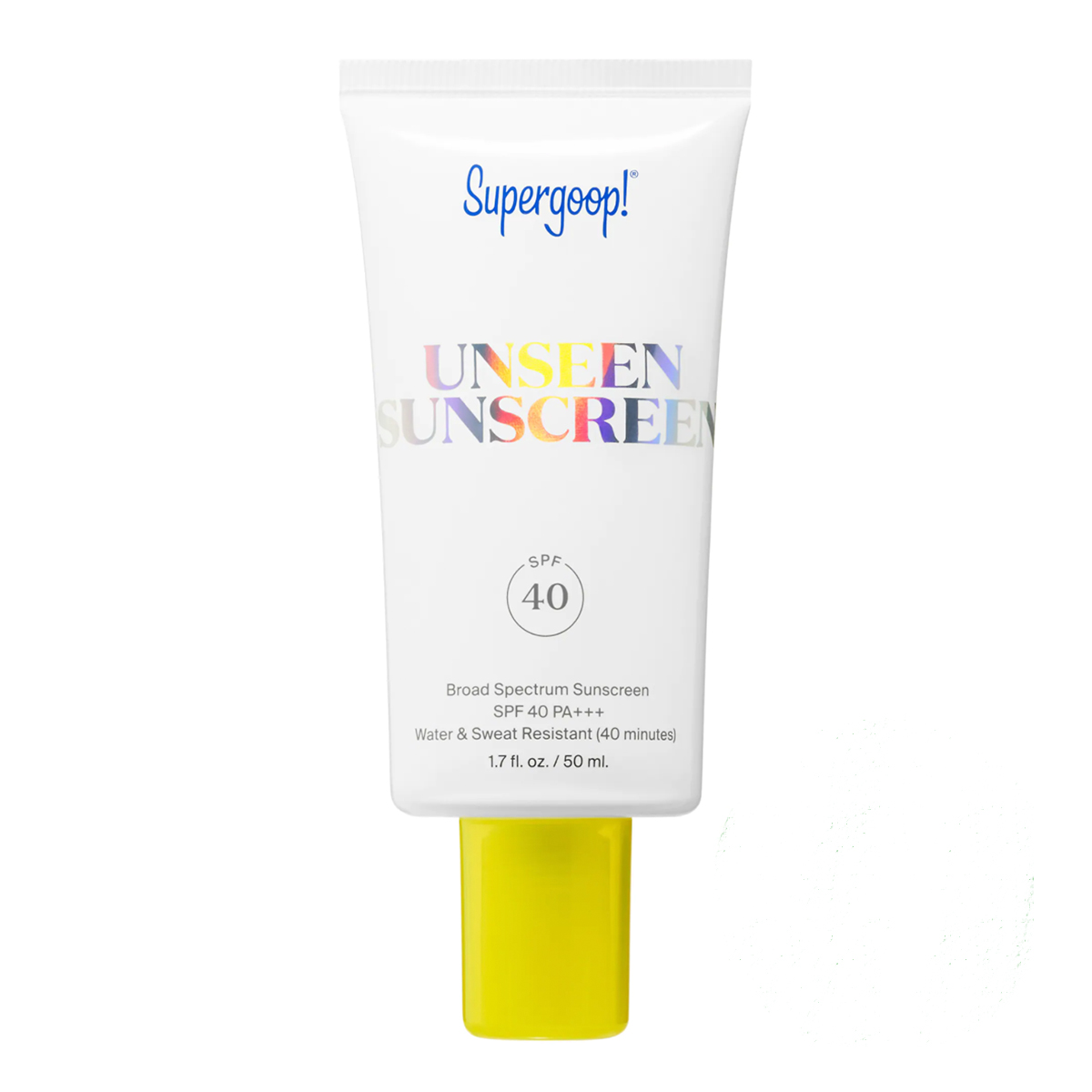
The sun is basically your enemy when you’re trying to heal scars, so you need to wear proper protection to decrease the chances of the scars getting darker. This is hands down the best sunscreen I’ve ever used. It's made with clean ingredients (aka, doesn't make you break out!) and really smoothes and preps skin in a way that's perfect for makeup application.
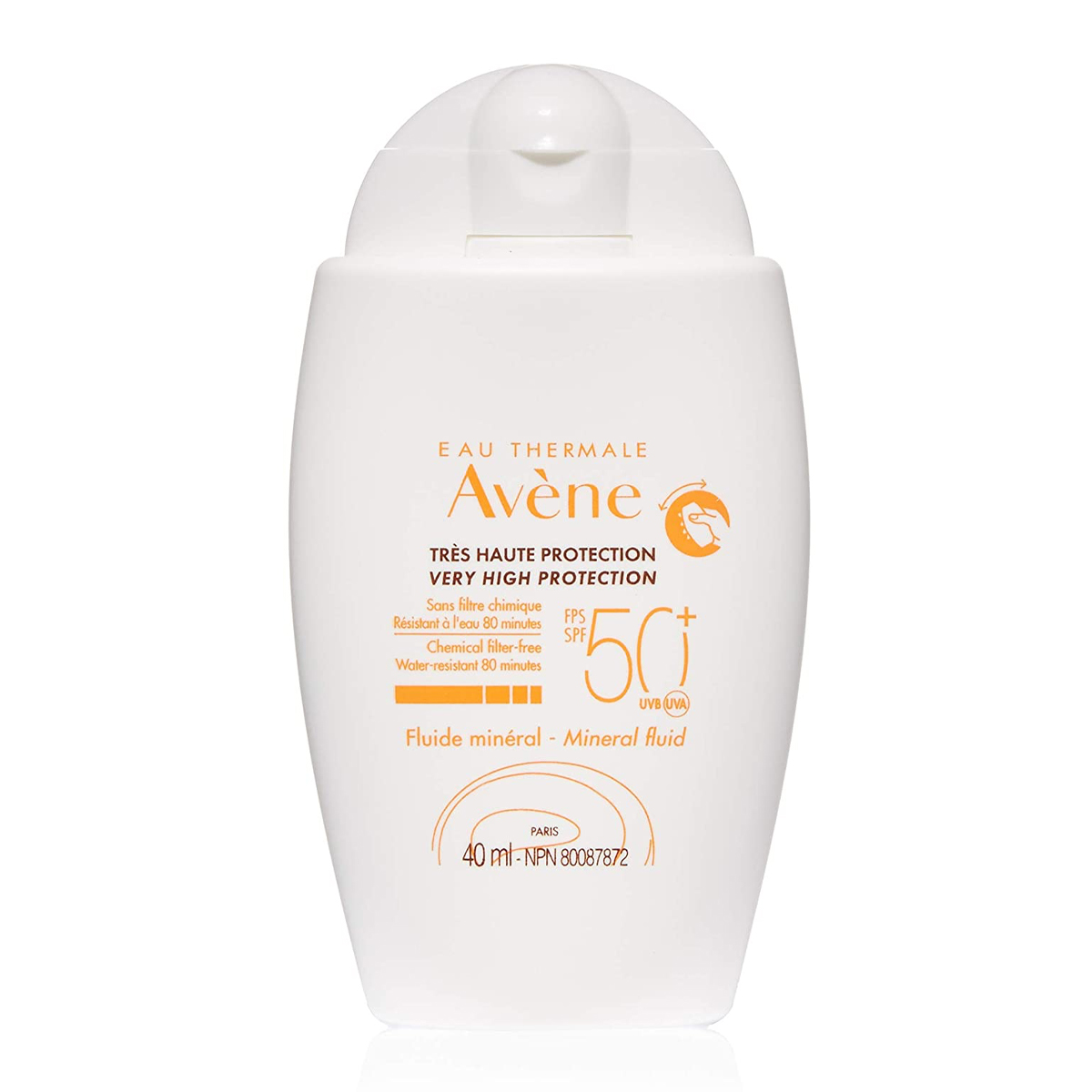
If you have pimples that have been recently picked, try and stay out of the sun to decrease the risk of pigment changes in the skin. "Ultraviolet radiation from the sun increases redness and increases pigmentation, both of which are worse following acne breakouts, and being exposed to the sun will only increase the length of time it takes for these areas to fade,” says Nazarian. Look for sunscreens with daily topical antioxidants that combat pigmentary alteration and accelerate wound healing and recovery from acne, like zinc oxide or titanium dioxide and pre-tocopheryl.
Tools for Improving Dark Marks
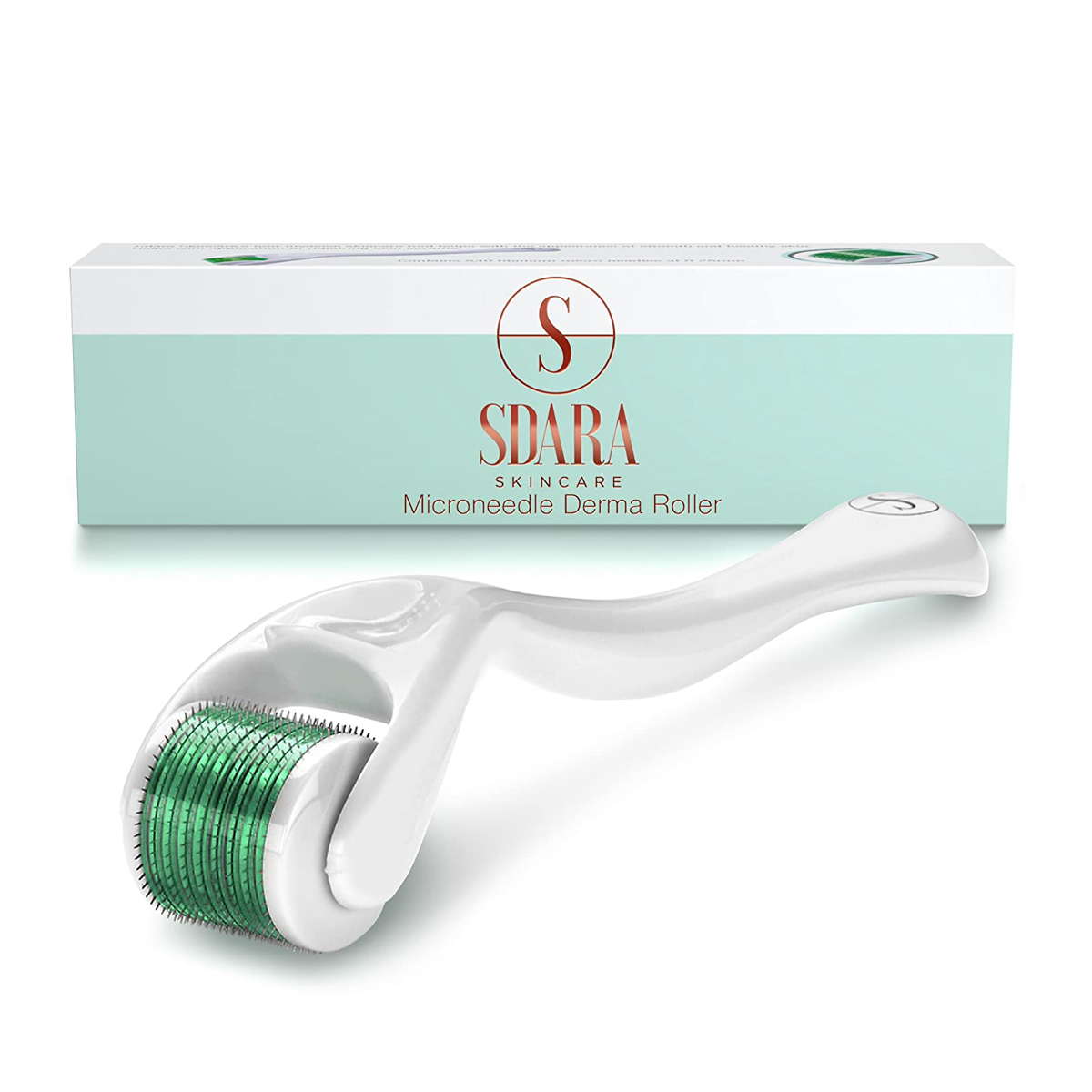
I have an at-home derma roller that I absolutely love and try and use once a week, but Nazarian says that expectations need to be managed. While it can stimulate collagen over time, it’s a very slow process and doesn’t produce dramatic or immediate improvement.

LED light therapy has been around for decades and can help treat acne, stimulate collagen and elastin, and reduce redness, wrinkles, and the appearance of dark spots. "While not as strong as in-office treatments, at-home LED lights, particularly red ones, can help with discoloration," says Farber. LED masks are a pretty safe bet because you can’t really mess up (while other wand-type devices have more room for error). This one comes with seven different colors that focus on specific concerns, like killing acne and tightening skin, smoothing skin, reducing redness, and increasing blood flow and collagen production, among others.
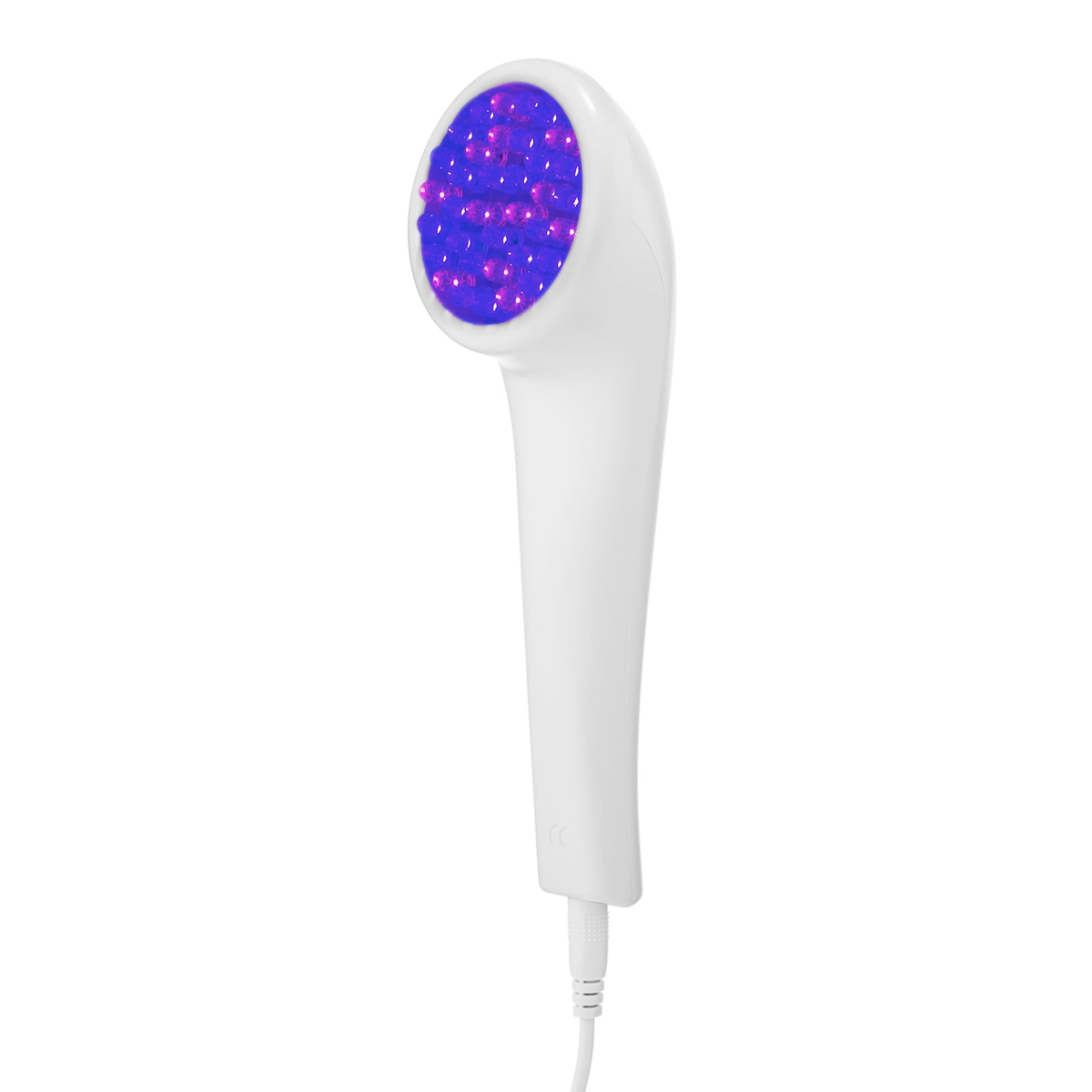
Aside from masks, I haven’t dabbled much in light therapy. I've had my eye on this because of all the good things I’ve heard. There’s a built-in three-minute timer that you turn on when you put the wand on a section of your face and hold it in place until the timer beeps. It’s obviously more of an arm workout than just slapping on a face mask, but I’ve heard it really helps existing acne and preventing future flare-ups.
Struggle with skin picking? Save this to help!
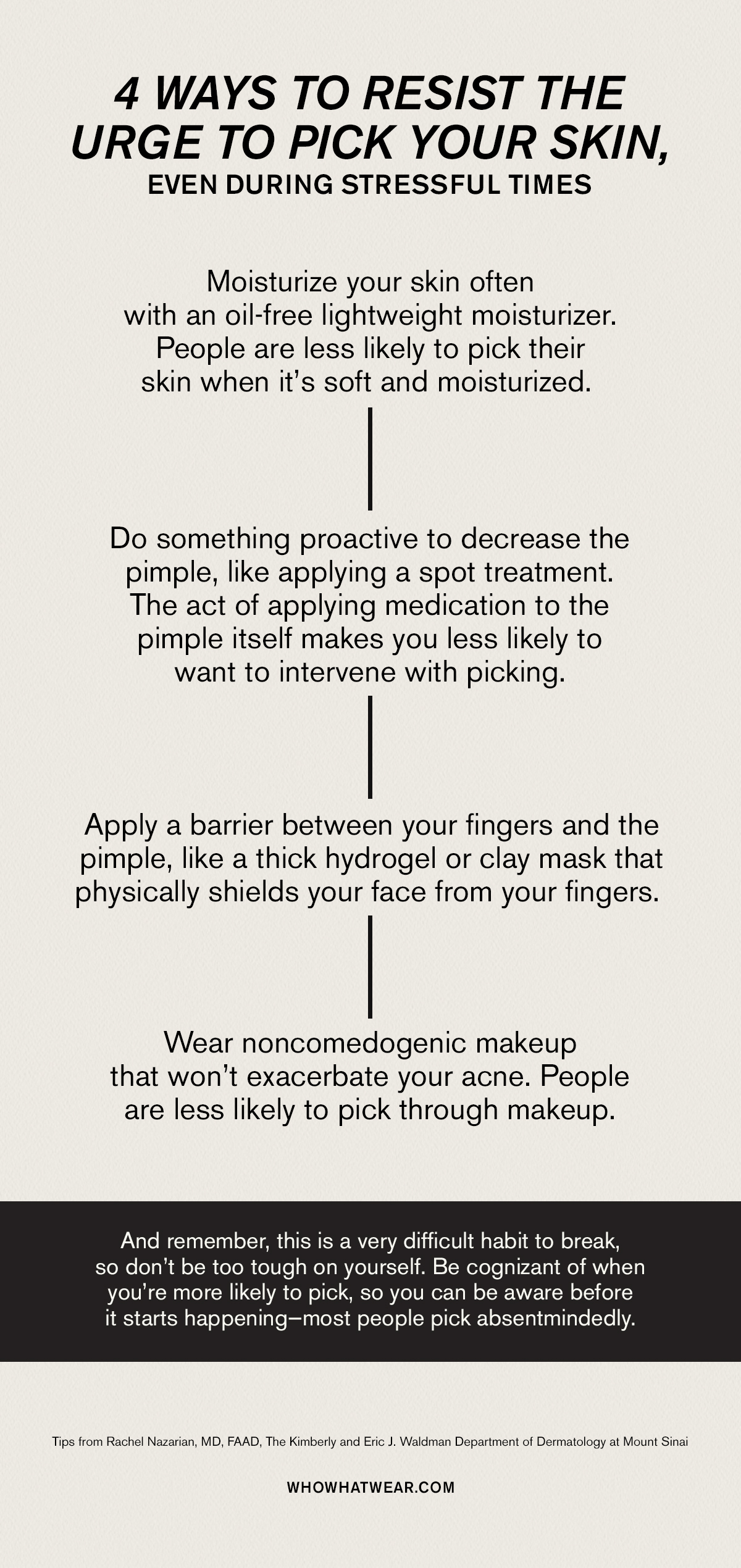
Next up: I Tried the So-Called Best Redness-Reducing Products—Here Are My Honest Reviews.
Caitie Schlisserman is an L.A.-based executive director with over a decade of branded content and editorial experience. She joinedBest Knockoff Luxury Clothing in 2014 as the first branded content editor and has worked her way up to overseeing a team of talented branded content editors on the media revenue team. BeforeBest Knockoff Luxury Clothing , Caitie helped launch FabFitFun's first subscription box and worked at a beauty startup where she assisted in successfully launching the editorial department.
-
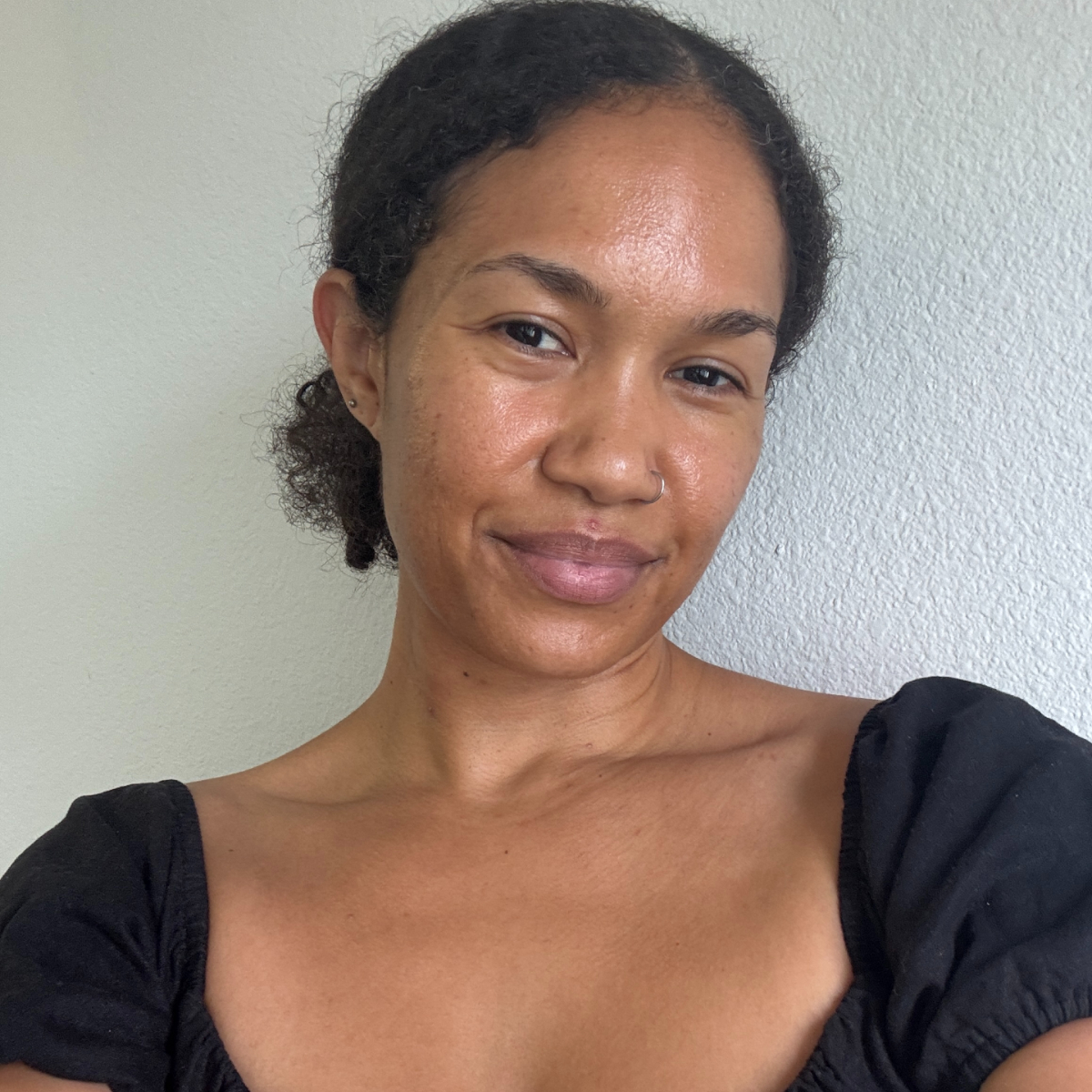 Tretinoin Damaged My Skin Barrier—Sabrina Carpenter's Aesthetician Gave Me These Complexion-Saving Tips
Tretinoin Damaged My Skin Barrier—Sabrina Carpenter's Aesthetician Gave Me These Complexion-Saving TipsThey're game-changing for acne-prone skin.
-
 According to an Aesthetician, This Key Fatty Acid Helps Curb Breakouts in a Big Way
According to an Aesthetician, This Key Fatty Acid Helps Curb Breakouts in a Big WayIf you break out often, your skin might be low in it.
-
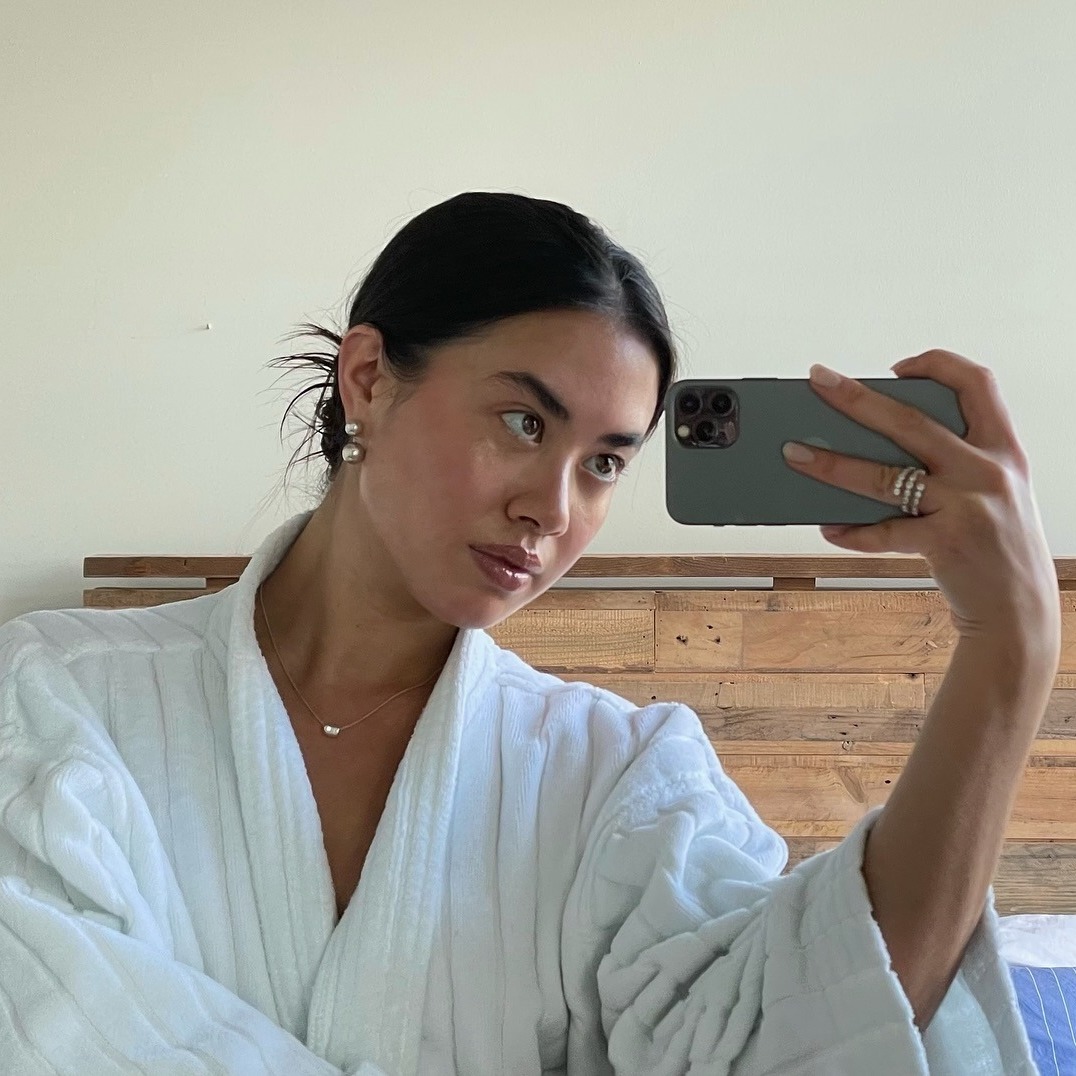 Meet Madecassoside—the Trending Ingredient That Soothes, Hydrates, and Protects Sensitive Skin
Meet Madecassoside—the Trending Ingredient That Soothes, Hydrates, and Protects Sensitive SkinIt's beauty's next big thing.
-
 Probiotics for Acne Are Trending, But Do They Actually Work? Here's What an Expert Says
Probiotics for Acne Are Trending, But Do They Actually Work? Here's What an Expert SaysTL;DR: They definitely can.
-
 Aestheticians on Instagram Can't Stop Raving About This Acne-Clearing Serum, so I Tried It
Aestheticians on Instagram Can't Stop Raving About This Acne-Clearing Serum, so I Tried ItIt's perfect for sensitive skin.
-
 I've Tried Everything, and These 5 Pore Strips Act Like a Magic Wand to Erase Blackheads
I've Tried Everything, and These 5 Pore Strips Act Like a Magic Wand to Erase BlackheadsBuh-bye.
-
 Lili Reinhart Knows You're Sick of Celeb Beauty Brands—Here's Why She Wants You to Trust Hers
Lili Reinhart Knows You're Sick of Celeb Beauty Brands—Here's Why She Wants You to Trust HersEspecially if you have acne.
-
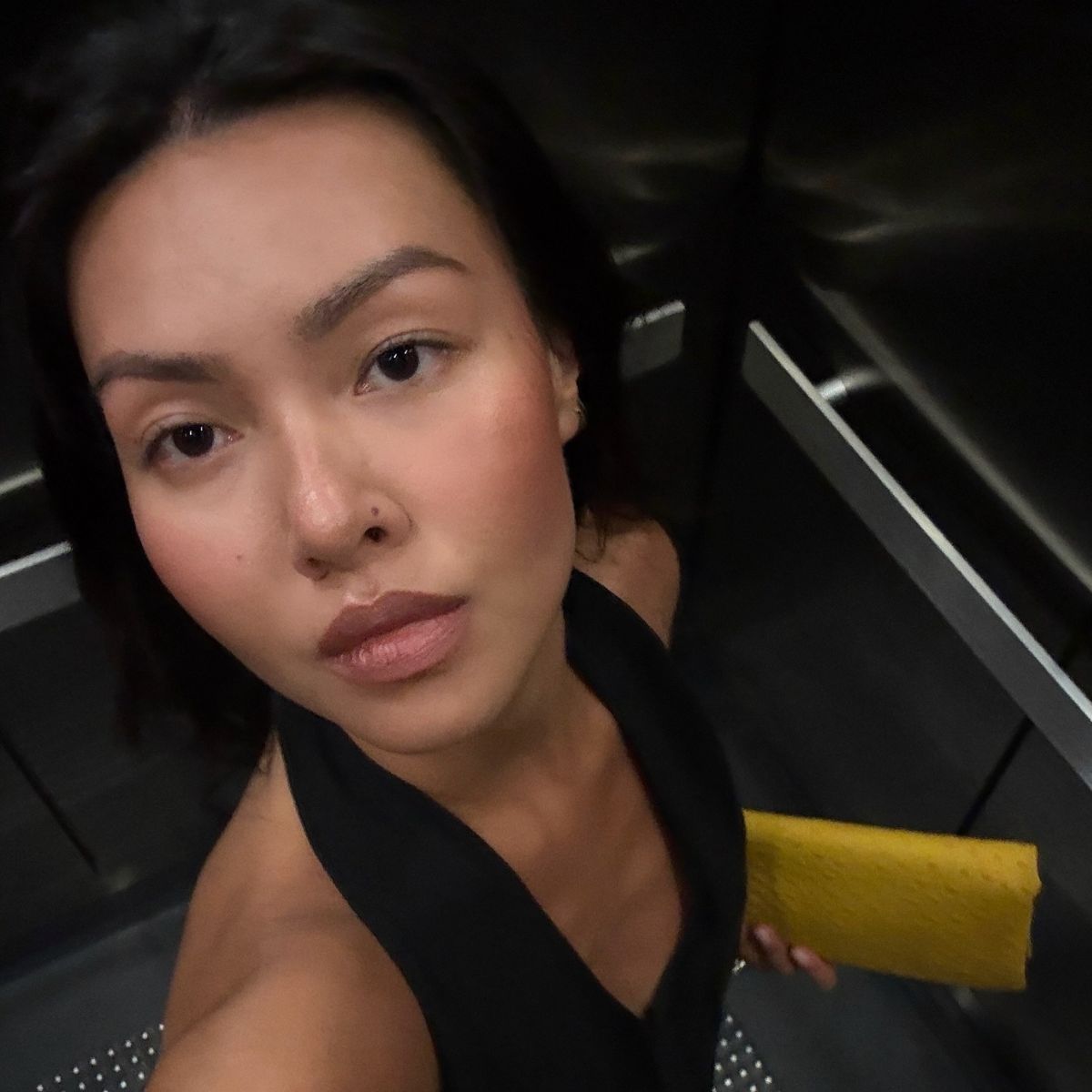 Stubborn Acne, Begone! These 12 Spot Treatments Actually Work, Per Editors and Derms
Stubborn Acne, Begone! These 12 Spot Treatments Actually Work, Per Editors and DermsCreams, gels, and patches we swear by.

